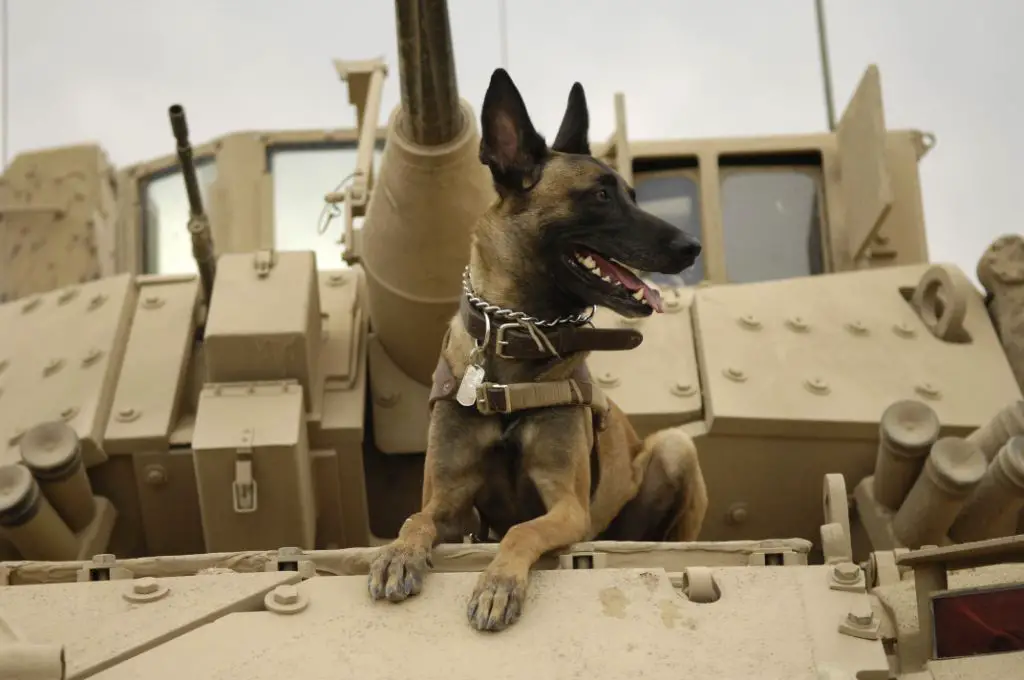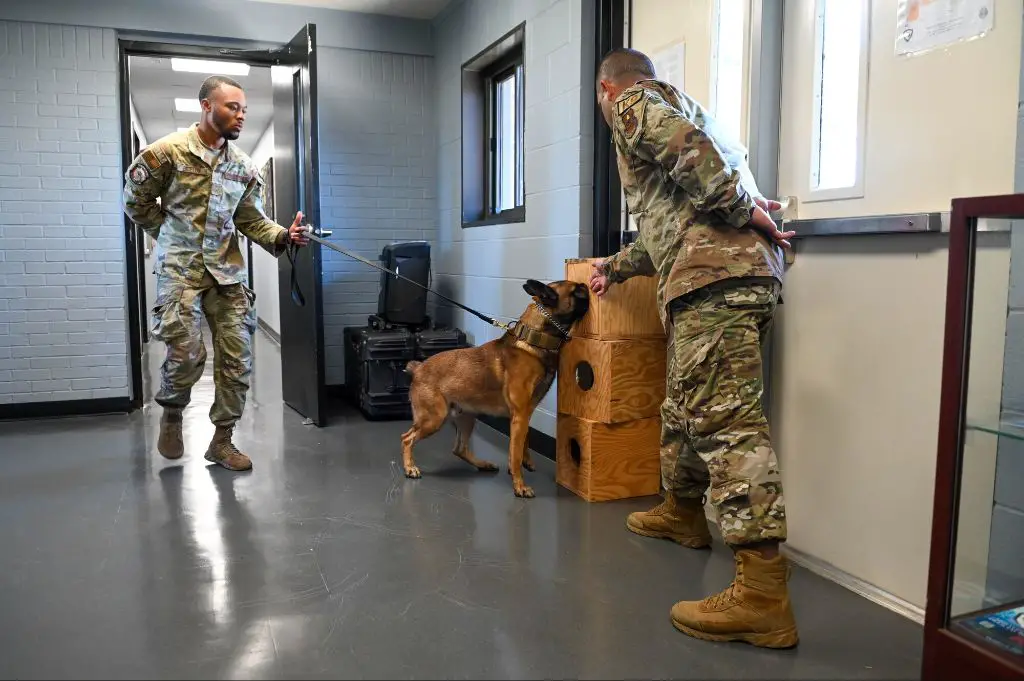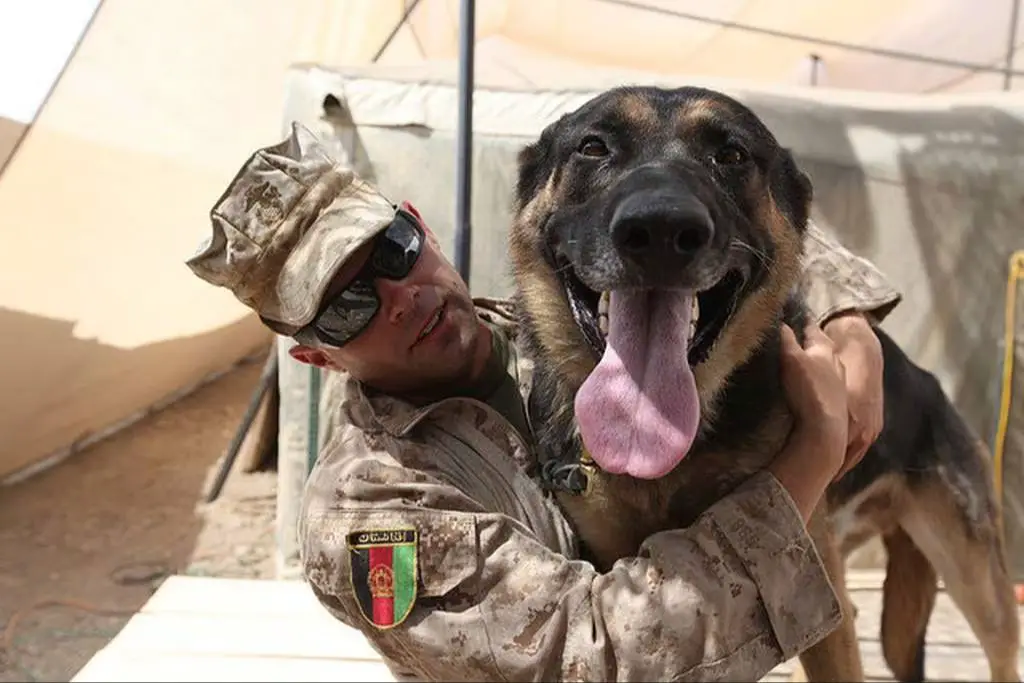The Vital Role of Military Working Dogs
Military working dogs have served alongside soldiers for centuries, providing vital services that support critical missions and help save lives. These highly trained canines use their powerful sense of smell, intelligence, athleticism, and loyalty to protect troops on the battlefield and safeguard civilians from harm.
From bomb detection to narcotics discovery, military working dogs fill indispensable roles that technology cannot replicate. Their partnership with handlers forms an unbreakable bond that keeps our armed forces and citizens secure. This article will explore the storied history, rigorous training, diverse duties, and lasting impact of these courageous four-legged forces.
History
Dogs have been utilized in warfare for thousands of years. The earliest recorded use of canines in combat was around 600 BC by the Egyptians, Greeks and Romans. For example, the ancient Greeks used large Molossian dogs to guard their armies and intimidate enemies in battle. According to the Wikipedia article on Dogs in Warfare, “The Molossian hound was renowned for its ferocity, and was specifically trained for war.”
Dogs continued to be used occasionally in warfare through the Middle Ages. However, it wasn’t until the late 19th and early 20th centuries that their military roles expanded substantially. As the AKC article Military Working Dogs: Canine War Heroes Through History explains, “The Prussian Army formed kennels to raise and train dogs for military purposes in the late 1800s…The Belgian Army followed suit in 1889.”

During World War I, dogs were employed by a number of militaries in a variety of roles, including as messengers, draft animals, sentries, and mine detectors. According to the Army Museums article A History of Military Working Dogs (MWDs), “An estimated 20,000 dogs were utilized on the Allied side.” Their service proved invaluable, increasing interest in expanded military canine programs.
Breeds
The most common breeds used in military and special forces work include the German Shepherd, Belgian Malinois, Dutch Shepherd, and Labrador Retriever. These breeds are preferred for their intelligence, trainability, work ethic, sense of smell, athleticism, and adaptability to different environments and tasks.
The German Shepherd is considered one of the best all-around military dogs. Their versatility, courage, loyalty and obedience make them well-suited for a variety of roles from sentry to search and rescue. Belgian Malinois have become increasingly popular, known for their energetic drive and ability to quickly learn complex tasks. They thrive on having a job to do. Dutch Shepherds are similar to the Malinois in temperament and capabilities. Labrador Retrievers have an excellent sense of smell paired with an outgoing, gentle nature, making them perfect for detecting explosives.

In general, these breeds have the physical stamina, mental focus, trainability and temperament needed for the demanding roles required of military and special forces dogs. Their combination of intelligence, eagerness to work, and ability to respond well to training is what makes them so valuable.
Roles
Military working dogs perform a variety of critical roles to support troops and missions. Some of the main roles include:
Sentry Dogs: Also known as scout or patrol dogs. Sentry dogs are trained to detect and alert their handler to the presence of unauthorized people in an area (1). They help secure perimeters, buildings, camps and other sites.
Explosive Detection Dogs: These dogs are trained to detect explosives including landmines, IEDs, and unexploded ordnance. They help sweep areas to identify explosive devices and protect personnel (2).
Tracking Dogs: Tracking dogs use their powerful sense of smell to locate and follow specific human scents. They are used to find lost personnel, fugitives, and hidden enemies (3).
Other roles include search and rescue dogs, mine detection dogs, tactical dogs, and specialized dogs trained to detect drugs or electronic storage devices.
Training
Military working dogs go through extensive training to prepare them for their roles. The training process focuses on conditioning them both physically and mentally to handle the demands of military work.
Physically, the dogs are exercised regularly to build strength, endurance and agility. They go on runs, do obstacle courses, and practice jumping and climbing. This physical conditioning is crucial for them to work long hours in harsh environments.
Mentally, the dogs are trained using positive reinforcement methods to teach obedience and focus. They learn commands through repetition and rewards like food, toys and praise. Some key commands include sit, stay, heel, attack, and cease. Trainers use patience and consistency to condition the dogs to respond reliably to commands in any situation.
Sociabilization is another critical part of training. The dogs are exposed to new sights, sounds, people, animals and environments so they remain calm and focused when deployed. Ongoing training maintains their conditioning throughout their career. With this tailored physical and mental preparation, military working dogs become highly skilled at their unique roles.
Handlers
Military working dogs form an incredibly strong bond with their handlers, who they rely on for companionship, care, and guidance during missions (What is the relationship like between military dog handlers and their dogs). Handlers are responsible for all aspects of their dog’s well-being, from feeding and grooming to training and healthcare. This deep connection is built through consistent daily interaction, as the handler lives and works with their assigned dog.
Handlers are carefully paired with dogs based on personality compatibility and skillset. The handler must be able to understand their dog’s abilities and signals during high-stress operations. Trust and communication between the pair can mean the difference between success and failure on a mission, so finding the right match is critical. The intense mental and physical demands require both the handler and dog to complement each other’s strengths and weaknesses (Military working dogs and handlers….a dedicated partnership).
This partnership built on trust and teamwork creates a profound bond that lasts well beyond the deployment or career of a military working dog team. When a dog retires from service, they are often adopted by their former handler so they can enjoy their retirement together.
Deployments
Military working dogs are deployed alongside their handlers around the world on a variety of missions. Some common deployments include Afghanistan, Iraq, Syria, and other combat zones where dogs are valued for their ability to detect explosives, drugs, track insurgents, and perform patrol duties (1). MWDs face significant dangers and risks during these deployments. For example, dogs can be injured or killed by gunfire, IED explosions, harsh environmental conditions, and more. According to one estimate, over 300 MWDs served in the Iraq and Afghanistan wars, with 25 killed in action (2). Despite the risks, these loyal dogs serve critical roles protecting troops and civilians from harm.
(1) https://www.dogsondeployment.org/page/military-pet-owners

(2) https://www.dogsondeployment.org/
Retirement
Military working dogs typically retire and are adopted out when they reach 8-10 years old, as they become less active and their senses start to deteriorate (1). Once retired, most military working dogs are first offered back to their former handlers or to law enforcement agencies. If they are not adopted by their former handler or a new agency, they can be adopted by civilians through organizations like the Warrior Dog Foundation or Mission K9 Rescue.
The adoption process involves an application and home visit to ensure the dog will be going to a good home after its years of service. There is sometimes a fee of several hundred dollars to provide care for retired dogs until they are adopted. Adopting one of these heroes is very rewarding, but prospective owners should be prepared to accommodate their specialized needs and help them transition to civilian life.
Controversies
There have been some controversies around the use and treatment of military working dogs throughout history. During World War 2, some nations like the Soviet Union and Japan treated dogs very poorly, using them for suicide bomb missions or not caring for them properly (Dogs in warfare). The US military’s practices have also come under scrutiny at times. In 1966, the Department of Defense classified military working dogs as “equipment” rather than “canine members of the armed forces.” This meant the dogs did not receive certain protections and benefits. After much protest, a law was passed in 2000 reclassifying military dogs as MWDs (military working dogs) and mandating their proper care and treatment. More recently, there has been criticism around MWDs being left behind or euthanized after their service. Overall, while standards have improved, the treatment of some MWDs throughout history highlights controversies around viewing these dogs as “tools” versus honored veterans who deserve care.
Impact
Military working dogs have had a crucial impact through their service, saving countless lives over the years. Some of the most famous hero war dogs include Stubby, the decorated World War I dog who located wounded soldiers. Bak, who completed over 100 missions detecting explosives in Afghanistan. And Cairo, part of the Navy SEAL team that took down Osama Bin Laden. Across major wars like WWII, Vietnam, Iraq, and Afghanistan, scout dogs are estimated to have saved tens of thousands of soldier’s lives through detecting ambushes, traps, and IEDs (1). Their bomb-sniffing capabilities alone are invaluable. More recently, Lucca lost a leg detecting an IED but went on saving lives (2). The unique power of dogs to smell explosives has protected countless troops from harm. Overall, military dogs’ service demonstrates their heroism and irreplaceable role in saving lives and critical missions.

(1) http://online.wsj.com/articles/military-dogs-sniff-out-ieds-save-lives-1414772453
(2) https://www.wearethemighty.com/popular/working-dogs-saved-the-day/
